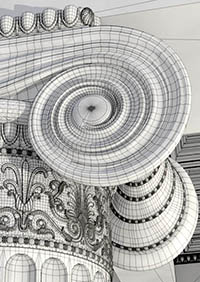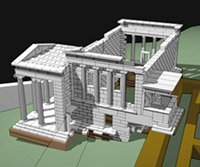Our reconstruction is as accurate as it is possible to be. Working from detailed CAD models which were drawn up by Dr Paul Blomerus, who referred to all the available information and checked measurements when inspecting in the field. We created a version of the Erechtheion that adheres strictly to the CAD model, then continued adding decoration and fine detail on all the architectural features.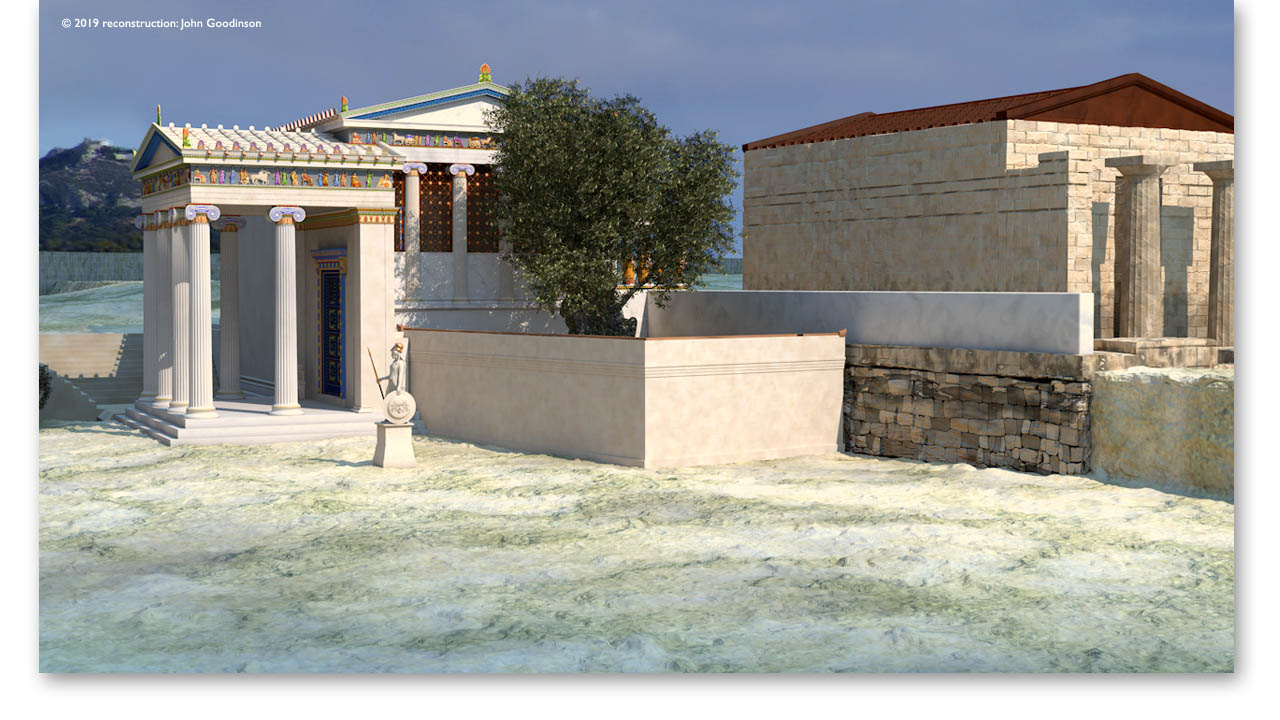
Our approach in reconstructing the Erechtheion.
 Each detail of the Erechtheion 3D reconstruction has been checked by Alexandra Lesk before inclusion. Although the modelling is not yet complete - particular details may yet change when new research is implemented on our reconstruction thus providing a more accurate representation from antiquity (left: Dr Paul Blomerus CAD Erechtheion).
Each detail of the Erechtheion 3D reconstruction has been checked by Alexandra Lesk before inclusion. Although the modelling is not yet complete - particular details may yet change when new research is implemented on our reconstruction thus providing a more accurate representation from antiquity (left: Dr Paul Blomerus CAD Erechtheion).
There is some artistic licence in selecting the colours, the shape and size of the sacred olive tree, use and placement of stone or marble altars and other features.
The Pandroseion
The adjoining architectural structure to the Erechtheion was known as the Pandroseion. A number of conjectural reconstructions have been proposed for this and we have looked at three possible solutions. From a simple 'L' shape to the more substantial Ionic and the Doric style.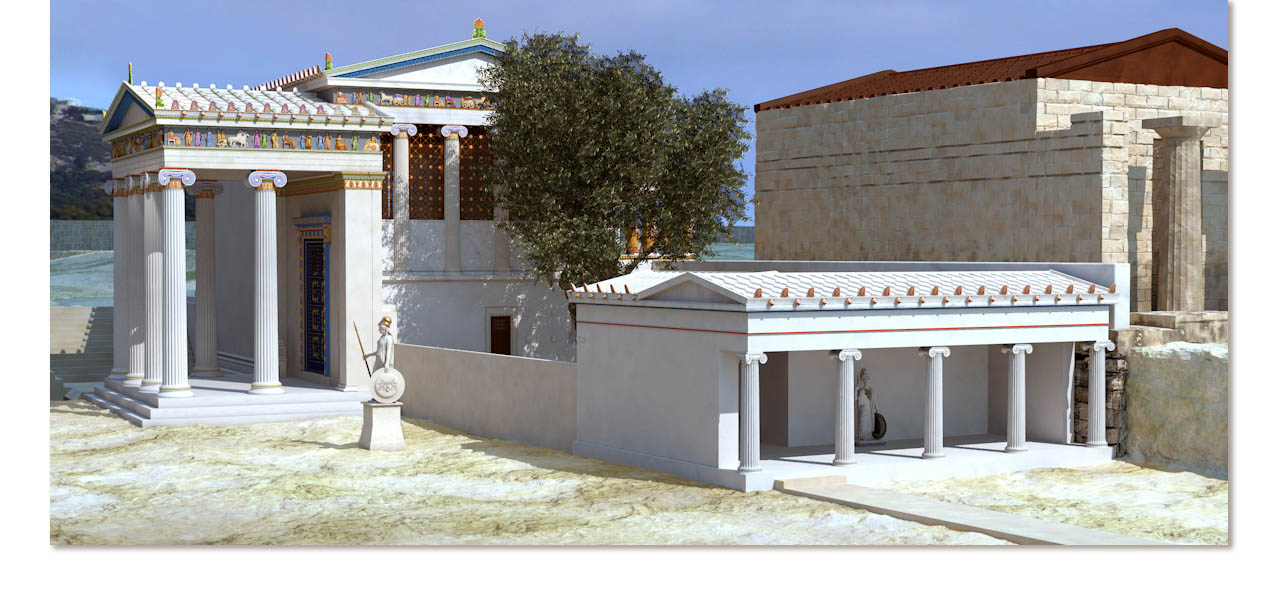
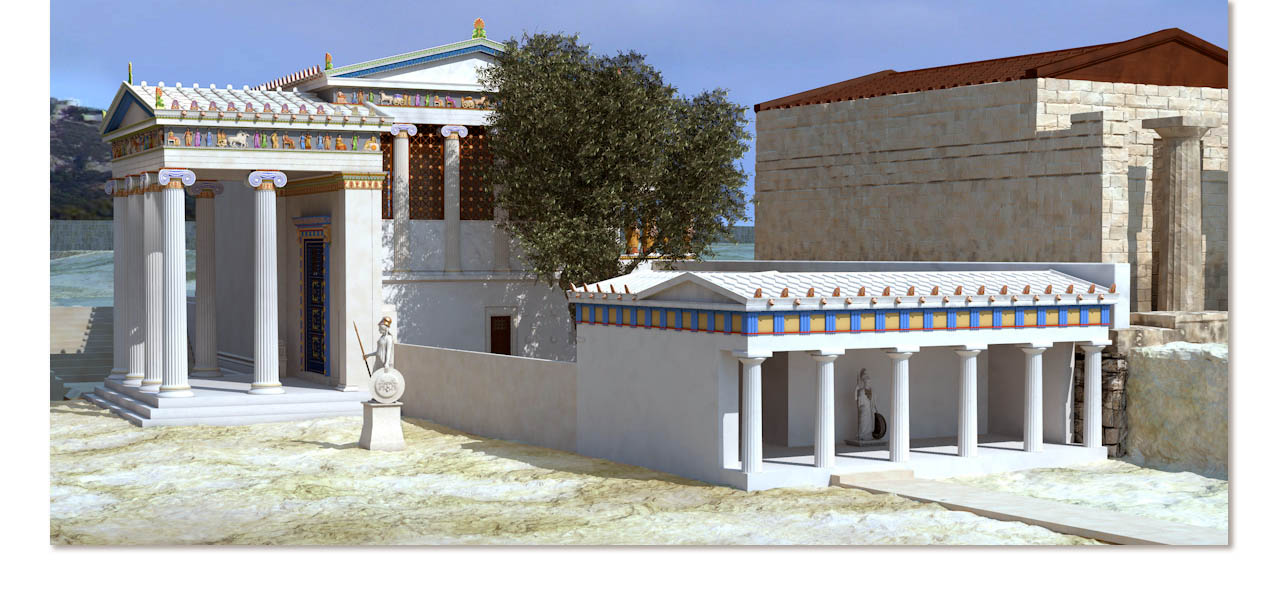
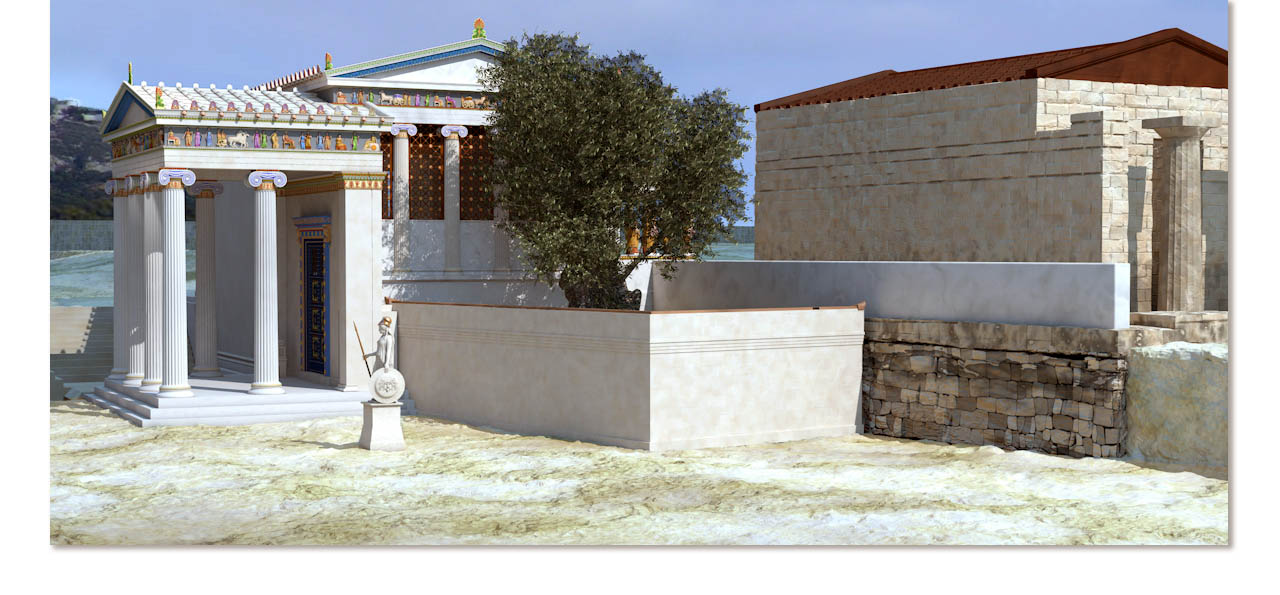
Kourtzellis Ioannis used our first 3D reconstruction from 2009 to evaluate the advantages and disadvantages of 3D computer graphics for the reconstruction of historical Hellenistic architecture in his published article:-
A critical approach to Digital Three-Dimensional Representation of Monuments, an excerpt is shown below:-
" The contribution of computers to archaeology and particularly to the study and visualisation of archaeological data for the confirmation of theories and the presentation of excavation material to the scientific community and the broader public has a history of almost twenty years, during which digital representations of exceptional accuracy have been achieved ".

